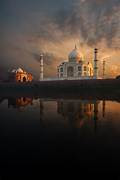The Caste System in Ancient India A Comprehensive Overview Introduction The caste system, often referred to as the Varna system or Jati system, is a complex and enduring social hierarchy that has shaped the Indian subcontinent for millennia. This intricate system, although rooted in the past, still influences contemporary Indian society. In this comprehensive exploration, we delve into the historical origins, structure, function, and evolution of the caste system in ancient India, tracing its development from antiquity to the present day. Historical Origins The roots of the caste system can be traced back to ancient Indian scriptures, particularly the Rigveda, one of the oldest sacred texts of Hinduism. In these texts, society was divided into four varnas, or classes: Brahmins, Kshatriyas, Vaishyas, and Shudras. The division was not initially based on birth but rather on occupation and duties. Brahmins : The highest varna comprised priests, scholars, and teachers, respo...
 A
Tale of Love and Devotion
A
Tale of Love and Devotion Architectural Splendors
Architectural Splendors Cultural and Historical Significance
Cultural and Historical Significance  Sunrise and Sunset Views
Sunrise and Sunset Views
Comments
Post a Comment